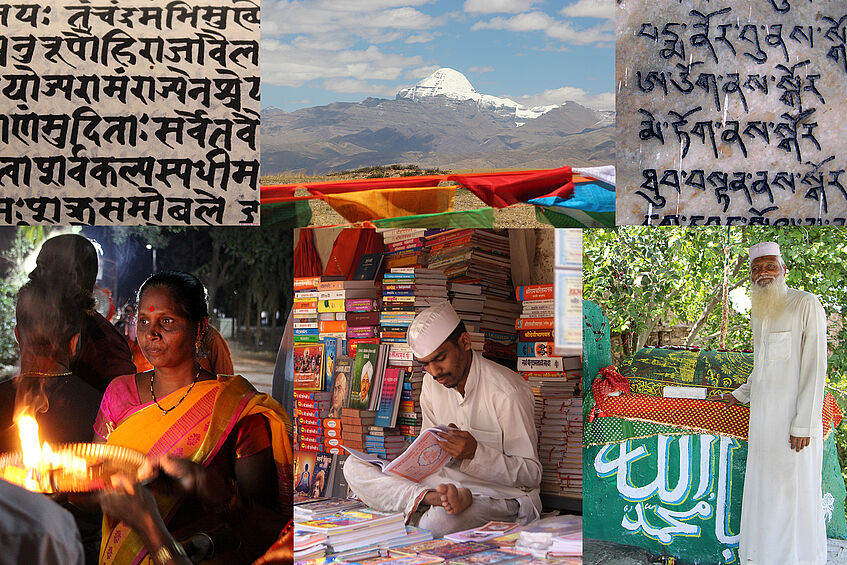Languages and Cultures of South Asia and Tibet (Bachelor)

© Universität Wien / Institut für Südasien-, Tibet- und Buddhismuskunde
The bachelor’s programme in Languages and Cultures of South Asia and Tibet aims at developing students’ basic competences in two or more selected languages of South Asia and Tibet from the past and present (classical Sanskrit and Tibetan, Old Indic, Prakrit, Hindi, Nepali, Modern Tibetan and additional relevant languages from the cultural area, depending on the current range of courses offered). It also familiarises students with the associated philological methods. Moreover, it provides an overview of: history of the language and linguistic anthropology, literature, philosophy and religion, culture and society, history and art of South Asia and Tibet, as well as subject-specific specialised knowledge in these areas.
Bachelor of Arts
Degree Programme Code: 033 629
6 semesters / 180 ECTS credits (including 30 ECTS credits of extension curricula)
Language: German
NO entrance examination
Facts & Figures
- Students: n.a.
- Graduates in the last academic year: n.a.
- Number of semesters needed for graduation (median): n.a.
Data updated on: 03.12.2024
Attention
Instruction Language German
Please note that the instruction language of this programme is German. To start the degree programme, you need to hold a certificate of German proficiency on C1 level.
Admission Procedure
Study Programme
The bachelor’s programme in Languages and Cultures of South Asia and Tibet consists of an Introductory and Orientation Period (STEOP), a compulsory module on subdisciplines and an alternative group of compulsory modules. From the latter students have to select one language (Sanskrit, Classical Tibetan, Modern Indian, Modern Tibetan) as their first language and another language (Sanskrit, Classical Tibetan, Modern Indian, Modern Tibetan) as their second language. Afterwards, students complete an elective module on culture and an alternative compulsory module, which they can select from a range of six subject areas. To successfully complete the programme, students have to write two bachelor’s theses.
Five Concepts
which you will deal with during your studies:
- Historicity
- Indology
- Hagiography
- Sanskrit
- Nepali
... and many more.
Overview of the programme structure & topics
Here you find the current offer of courses for this programme to gain better insight into the topics and structure. For more information please click on the respective level.
After Graduation
Graduates are qualified to pursue a career in the following occupational fields:
- university and non-university educational and research institutions, museums and libraries
- cultural and educational work
- publishing
- journalism
- diplomatic service
- other occupations that require sound academic knowledge and intercultural competence in relation to Asian cultures.
Graduates' Perspective on the Degree Programme
Graduates ...
- say that this degree programme receives the grade: 2.4 (good)
- rate the level of difficulty as: 3,1 (appropriate)
→ These results are basd on feedback from 7 graduates.
*You can find further assessments of the degree programme from its graduates’ perspective in the graduate survey of the bachelor’s programme in Languages and Cultures of South Asian and Tibet graduation survey (in German).
Graduates ...
- find employment within 2 months after graduation on average.
- earn an average of € 2,558 (women) and € 2,599 (men) gross per month within three years after graduation.
- work full time at a percentage of 65% (women) and 70% (men) within three years after graduation.
*You can find further information on career entry and career paths in the tracking of graduates "Arts and Humanities".

